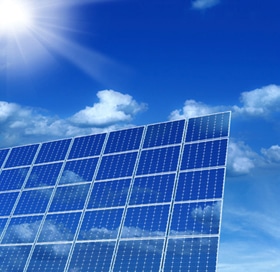
Alternative Energy and Our Environment
Is Alternative Energy Good for the Environment
![]() Alternative energy and the environment is the new concern of the moment. Unless you have been living in a cave for the past decade, you can not fail to be aware of the massive global efforts being made to discover viable ways of powering our incredible energy needs.
Alternative energy and the environment is the new concern of the moment. Unless you have been living in a cave for the past decade, you can not fail to be aware of the massive global efforts being made to discover viable ways of powering our incredible energy needs.
Alternative energy sources play a crucial role in protecting our environment by significantly reducing greenhouse gas emissions and combating climate change. Unlike fossil fuels, renewable energy sources generate electrical power without releasing harmful carbon dioxide (CO2) and other pollutants into the atmosphere.
These are vital alternatives to our use of fossil fuels for energy, because that source is fast running out. But what is the definition of “alternative energy”, and can alternative energy and the environment work hand in hand, or are we just going to swap one finite source of energy for another. So the search for sustainable alternative energy sources to replace oil goes on.
Moreover, alternative energy promotes environmental sustainability by conserving our planet’s finite resources. These renewable sources are naturally replenished, unlike coal, oil, and natural gas which are rapidly depleting. The transition to clean energy production helps improve air quality as well as public health.
How the Environmental Impacts of Renewable Energy Compares to Fossil Fuels
The problem with our current energy sources derived from fossil fuels, is that they have taken millions of years for Mother Nature to produce, but only decades for us to virtually use them up.
Fossil fuels such as Coal, Natural Gas and Petroleum Oil are not things that can be recreated overnight, and are therefore known as non-renewable energy resources. You only need to look at the soaring prices of fossil fuels and especial fuel to know that demand for this limited resource is beginning to outstrip supply.
The transition to alternative energy also helps protect ecosystems by minimizing environmental damage caused by mining, drilling, and fossil fuel extraction processes.
A few decades ago, nuclear power was hailed as the perfect answer to the upcoming fossil fuel problem. It was thought that massive amounts of green alternative energy could be gained from a relatively small amounts of uranium. But along with the dangers that we now know exist with this option, uranium ore was found to be a finite natural resource, because one day we are going to run out of that as well.
So the hunt for a truly renewable energy resource began. A source of energy that not only is infinite, but also does not emit the toxic gases produced by burning fossil fuels that are at least partly responsible for climate change (not to mention filling the air we breathe with toxins that you honestly don’t want to even think about).
So what are the main environmental benefits of alternative energy.
- Reduced greenhouse gas emissions compared to fossil fuels
- Lower air pollution and improved air quality
- Minimal water pollution compared to coal/oil extraction and use
- Preservation of finite fossil fuel resources
So what are the choices available for a newer cleaner alternative energy which is good for the environment, and can they ever really replace traditional fossil fuel sources in terms of efficiency and cost.
Alternative Energy and the Environment List
Here are a few of the alternative energy resources available to us all and are which becoming a reality.
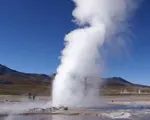 1. Geothermal Energy: – Is an interesting alternative energy resource. Deep below our feet the core of the planet is a seething, boiling mass of molten rock. Geothermal is an enormous form of green energy, and one that is only recently becoming seen as a viable source of heat and electricity.
1. Geothermal Energy: – Is an interesting alternative energy resource. Deep below our feet the core of the planet is a seething, boiling mass of molten rock. Geothermal is an enormous form of green energy, and one that is only recently becoming seen as a viable source of heat and electricity.
You only need think about the power of volcanoes, or geysers that shoot boiling water hundreds of feet into the air, to realize quite how potent this can be. This molten rock heats water below the surface of the earth, and this can then be pumped upwards using geothermal heat pumps to heat or cool our buildings.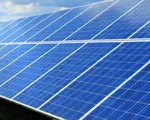 2. Solar Power: – Solar power, or using the power of the sun, might sound the stuff of science fiction but it truly is one of the strongest forms of alternative energy there is. After all, the sun already provides us with warmth and light. We do this via solar converters known as photovoltaic cells and panels.
2. Solar Power: – Solar power, or using the power of the sun, might sound the stuff of science fiction but it truly is one of the strongest forms of alternative energy there is. After all, the sun already provides us with warmth and light. We do this via solar converters known as photovoltaic cells and panels.
You have probably seen the blue panels adorning the roofs of many houses – and are sometimes referred to as simply solar panels. The free energy provided by the sun’s rays can be turned into electricity but it can also be used to heat water even on cloudy days. 3. Biomass and Bioenergy: – These alternative energy sources are perhaps a little less well known than some of the others. Biomass energy refers to a source created from both biodegradable organic waste and plant sources specifically grown to be burnt as an energy source either separately or cofired with coal.
3. Biomass and Bioenergy: – These alternative energy sources are perhaps a little less well known than some of the others. Biomass energy refers to a source created from both biodegradable organic waste and plant sources specifically grown to be burnt as an energy source either separately or cofired with coal.
Organic waste might typically include compost, garbage and animal manure which could be converted into a green energy. Plants grown specifically as fuel crops include trees, straw, grasses and peat. Once harvested, these plant sources can be replanted and regrown playing an important role in saving our planet. 4. Hydro Energy: – This is energy generated from the movement of running water. Hydro energy has long been used to create energy – think of water wheels and water mills grinding corn. Today we harness this kinetic power using hydro-electric power stations and dams.
4. Hydro Energy: – This is energy generated from the movement of running water. Hydro energy has long been used to create energy – think of water wheels and water mills grinding corn. Today we harness this kinetic power using hydro-electric power stations and dams.
Huge dams built in natural rivers and waterways utilize the massive power of the trapped water, which is then used to turn electrical turbines to generate electricity. This is one of the biggest forms of alternative energy used on the planet right now, with an estimated 90% of all electricity generated in this manner.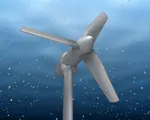 5. Tidal Power: – This is another, more recent form of hydro-energy which is generated by the huge forces circulating around the sea. Tidal power comes from the kinetic energy produced from the falling and rising motions of the ocean tides, waves, sea currents and water flowing in and out off estuaries.
5. Tidal Power: – This is another, more recent form of hydro-energy which is generated by the huge forces circulating around the sea. Tidal power comes from the kinetic energy produced from the falling and rising motions of the ocean tides, waves, sea currents and water flowing in and out off estuaries.
Using hydro-kinetic marine devices, it is possible to transform this tremendous power of the oceans into electricity. This will warrant a substantial investment into building these tidal power stations, but once created, the energy source to power them is free, as well as having low running costs. 6. Wind Energy: – This powerful force of nature has been harnessed for thousands of years using windmills and sail boats. Today we have taken this ancient technology one step further, and the sight of wind turbines in countries all over the world is increasingly becoming a common one.
6. Wind Energy: – This powerful force of nature has been harnessed for thousands of years using windmills and sail boats. Today we have taken this ancient technology one step further, and the sight of wind turbines in countries all over the world is increasingly becoming a common one.
Governments are investing substantial sums into building these wind farms both on land and out in the sea as it is seen as one of the most cost effective forms of creating electrical power. The wind which we can not see and take for granted every day is now being used to power our homes.
As you can see, our search for cleaner, greener alternative energy sources has created both brand new forms of renewable energies – such as photovoltaic cells and bioenergy – as well as improvement on those old technologies that have been around for hundreds if not thousands of years, such as hydro-energy and wind energy.
Overall, the environmental benefits of alternative energy typically outweigh the drawbacks when systems are properly designed and implemented. The careful planning and siting of clean energy projects helps to minimise the impact to the local environment and ecosystems.
Then we can say that alternative energy refers to renewable energy sources, such as solar, wind, and hydroelectric power, that can replace fossil fuels and reduce the environmental impact that burning fossil fuels brings.



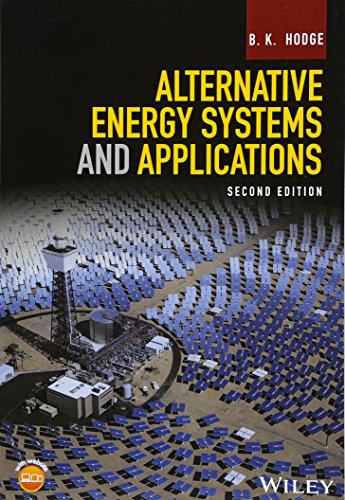







Alternative energy, no doubt has become the hot technology in last few years. We get to read about so many solar farms, wind energy projects being started in various countries. The need of the hour is to stop using the old ways to harnes energy and put maximum effort to harness this never ending clean energy.
Building a new house in San Diego these days is a challenge. However, there are three rebate programs that can ease the financial burden on an owner builder who is doing the right thing, and making his/her house energy efficient and, to a degree, self-powered by sunlight conversion into electric energy.
Every day gas prices are high and, it is little wonder that many home builders are incorporating solar power into new home design. There are advantages to incorporate considerations for solar power into a home design, instead of retrofitting the infrastructures for solar power later.Solar power can be used in some conventional and some new ways to heat and power a home.
Thanks